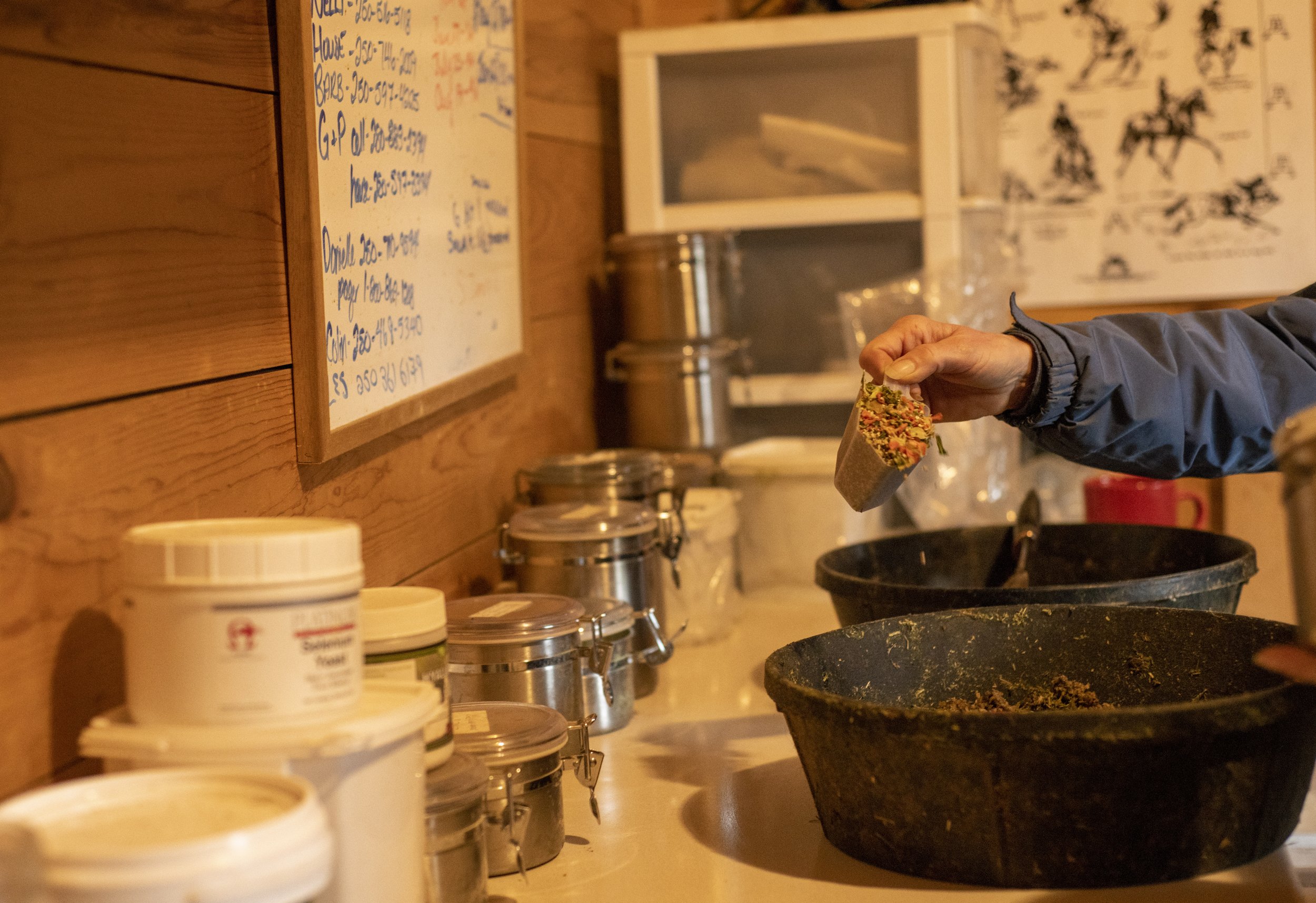Is Your Horse a Picky Eater? Tips for Introducing New Foods
Most of us have had a horse who is either picky or suspicious of new foods. Some are born that way, and for others it’s a learned habit. Figuring out how to successfully add new foods can be challenging, so we have put together a list of things to consider when your horse is being picky, or just when adding new foods.
Tip #1: Think about the Moisture Content.
Some prefer horses prefer their food wet, some prefer it dry. If it’s too dry, it can become like glue when mixed with saliva, or can be inhaled when they are eating causing discomfort.
Play around with the moisture content to see if you can find a happy medium that your horse likes.
Tip #2: Consider the freshness.
Are you soaking hay cubes, pellets, or beet pulp/shreds? Perhaps they are sitting a bit too long, or the water is the wrong temperature. If your schedule doesn’t allow you to soak hours before, or you don’t have warm water at the barn, consider a different option. For example, beet pulp shreds can soak in as little as 15 mins with warm water, while beet pulp pellets can be left for about 12 hours with cold water.
Tip #3: Think about texture.
Some horses prefer crunchy food, while others like their food mushy. Test out textures to figure out what your horse likes best.
Tip #4: Other horses can be a factor.
Some horses find themselves stressed when eating their grain if there are either no horses within their sightline, or there are other horses who could try to get their food. While not ideal for everyone, sometimes separating the horses while they eat can cause them to be able to calmly eat until they have finished their meal.
Tip #5: Could it just be a bad batch of feed?
Most of us have bought a bag of feed at some point which our horse turns it’s nose up at. If he does, there could be a reason. Check the expiration date. Smell it. Look for anything out of the ordinary in the feed. Most feed stores will return or exchange a food product which your horse won’t eat, so if you think there is something off, talk to the feed store where you purchased it.
Tip #6: Introduce new foods one at a time.
Even if you really want to, try to avoid adding too many new things at once. Not only will this make it challenging to determine the cause if you have an adverse reaction, but too many new things can be off-putting to a horse. After all, being flight animals they thrive on consistency, and can become stressed by too much change.
Tip #7: Take it slow.
It is always a good rule of thumb to introduce new foods slowly, especially if you have a horse who can be picky or suspicious. Try starting with a ¼ dosage for a day or two before increasing to a half dose, and then a day or two later a full dose. This will not only give your horse a chance to get used to a new flavour, but will also give the digestive tract time to adjust.
Tip #8: is there one flavour that you know they love?
If they’re still struggling with a new flavour, consider adding something that you know they love (carrots for example) in order to overpower the new flavour. In theory, after eating the new food for a few days, your horse should be used to the flavour. Then slowly ease back on the carrots or whatever you chose until they no longer need them to be encouraged to eat the new food.
Don’t forget patience.
While we all want our horses to eat a new supplement right away, sometimes it takes time. So don’t forget to be patient, and try some of these tricks.
If they don’t work and you are still struggling to get your horse to eat a new food at this point, feel free to reach out to us for some extra ideas.
And remember, if it’s G’s products that you are trying to introduce to your picky eater, we have trial sizes so that you don’t end up with yet another supplement on your counter going to waste!

